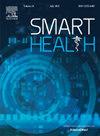Automated supplement correction in passive urine color measurement device for real-time hydration testing
Q2 Health Professions
引用次数: 0
Abstract
Monitoring urine color as a means of assessing hydration status has long been a recommended technique for active populations like athletes, military personnel, and outdoor laborers. Urine color correlates well to urine concentration and is a simple, non-invasive practice. However, currently this approach is subjective, and errors arise in variation in ambient lighting conditions, comparator colors used, and individual perception. In addition, certain supplements such as riboflavin (vitamin B2) and beet juice are known to distort urine color and can confound hydration assessment. An automated urinalysis device (InFlow) was developed to measure urine color, an index of hydration status, in real-time during urination in the presence of these supplements. Machine learning techniques were used to reduce mean absolute hydration assessment error from riboflavin-derived color skew from 2.50 ± 0.37 to 0.85 (±0.06) color units on a 7-point color chart scale compared to a commercial colorimeter. In the absence of supplements and in the samples spiked with beet juice the InFlow device produced a mean absolute error of 0.48 (±0.06) color units. Finally, we demonstrate the feasibility of detecting myoglobinuria for potential future use in rhabdomyolysis screening. Our results show the InFlow device provides a novel approach with appropriate accuracy for standardizing hydration assessment via urinalysis in environments with high testing frequency demands in the presence of common urine color interferents including riboflavin and beet juice.
用于实时水合测试的被动尿液颜色测量装置中的自动补充校正
长期以来,监测尿液颜色作为评估水合状态的手段一直是运动员、军事人员和户外劳动者等活跃人群的推荐技术。尿色与尿浓度密切相关,是一种简单、无创的方法。然而,目前这种方法是主观的,并且在环境照明条件、使用的比较器颜色和个人感知的变化中会出现错误。此外,某些补充剂,如核黄素(维生素B2)和甜菜汁,已知会扭曲尿液颜色,并可能混淆水合作用评估。开发了一种自动尿液分析装置(流入),用于在这些补充剂存在的情况下实时测量尿液颜色,这是水合状态的指标。与商用色度计相比,使用机器学习技术将核黄素衍生色偏的平均绝对水合评估误差从2.50±0.37降低到0.85(±0.06)个色单位(7点色度表)。在没有添加补充剂和加入甜菜汁的样品中,流入装置产生的平均绝对误差为0.48(±0.06)个颜色单位。最后,我们证明了肌红蛋白尿的检测在横纹肌溶解筛查中潜在的未来应用的可行性。我们的研究结果表明,在核黄素和甜菜汁等常见尿液颜色干扰物存在的高检测频率环境中,流入设备为标准化尿液水合评估提供了一种新颖的方法,具有适当的准确性。
本文章由计算机程序翻译,如有差异,请以英文原文为准。
求助全文
约1分钟内获得全文
求助全文

 求助内容:
求助内容: 应助结果提醒方式:
应助结果提醒方式:


